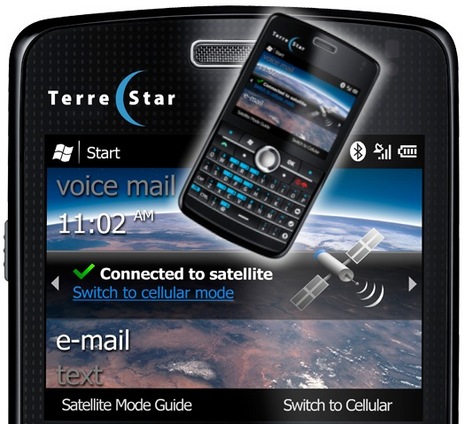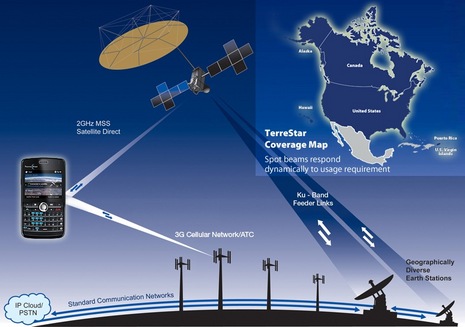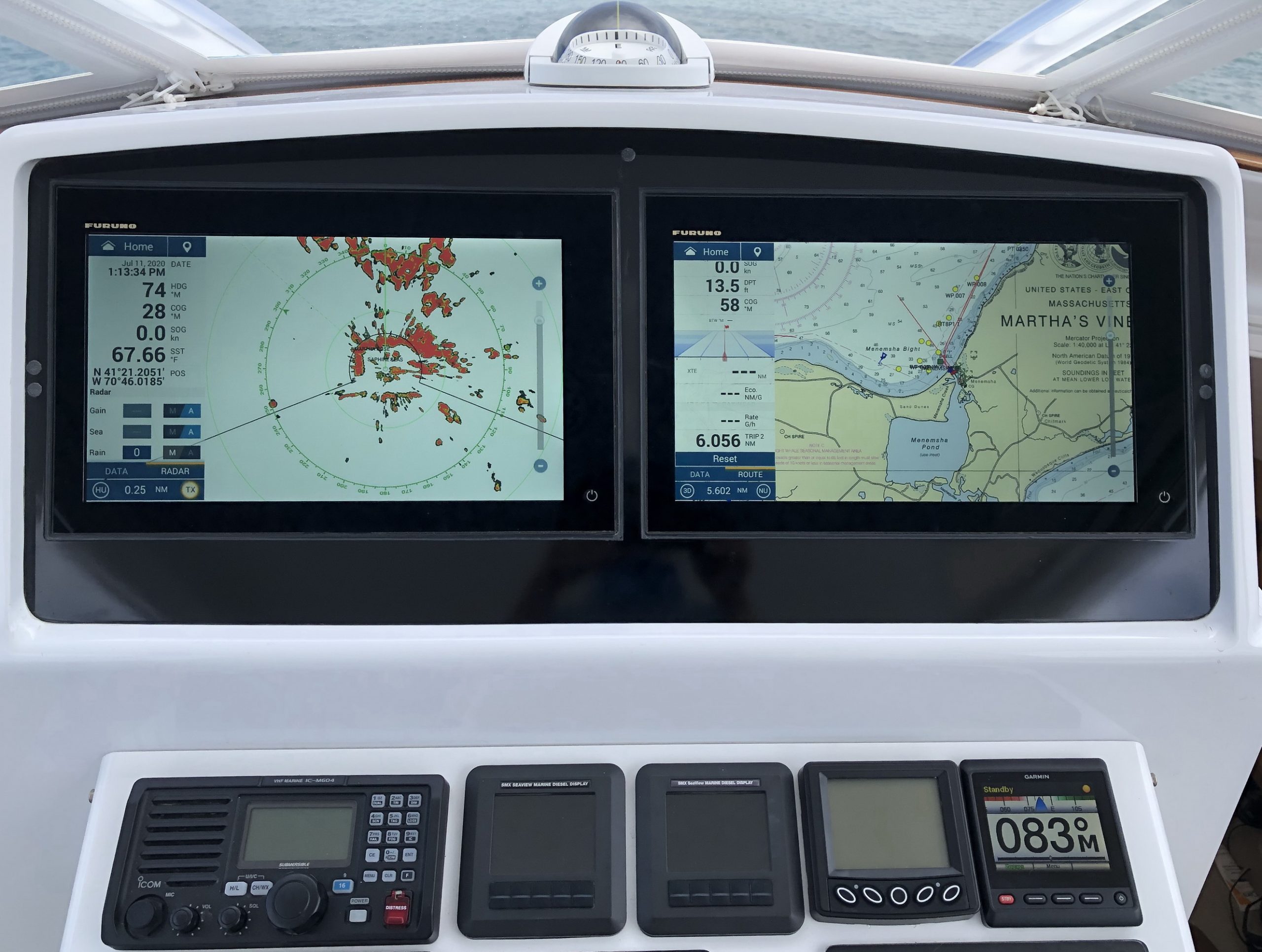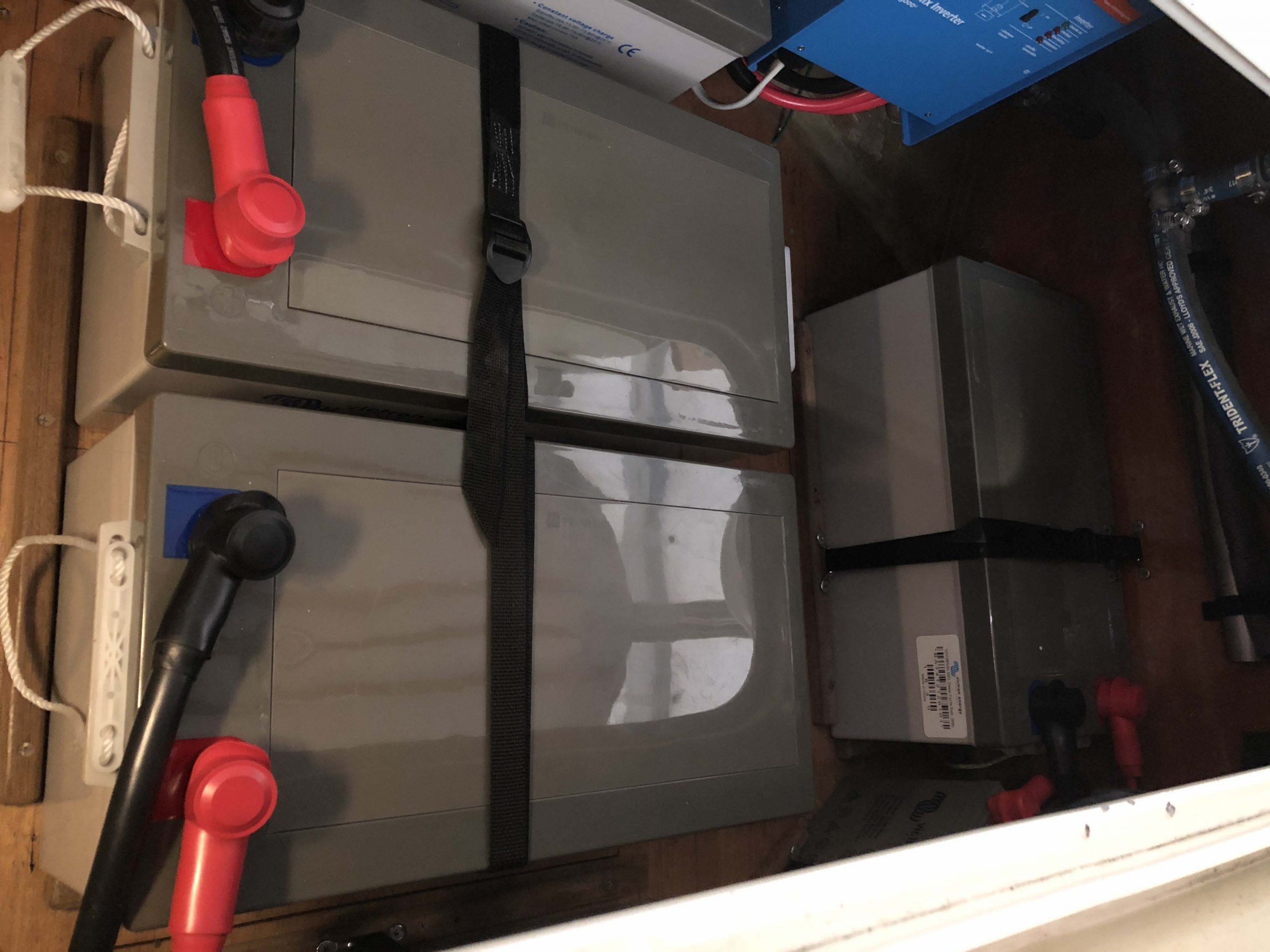TerreStar AT&T Genus, sorry sailors?
Damn! An AT&T 3G smart phone that can use the world’s largest commercial satellite for voice and data if you roam beyond cell range, no oddball second phone number, no dorky antenna? The big bird is up, the Genus phone is at the FCC, and the whole deal seems on track to be real in early 2010. But will it be a big deal for boaters? That may depend on what system developer TerreStar means by “offshore coastal waters”…
For sure, TerreStar is starting as a one-satellite North-America-only-service (and I can’t find any hints of expansion plans). But I’m confused about the North America coverage map shown below. I think it indicates that the Genus phone will work anywhere in the U.S. and Canada, Baffin Island included. Hawaii and Puerto Rico are also included, but not the Bahamas, Hispaniola, or Mexico. Now of course the latter omissions are probably about licensing regulations, not transmission technology, and the phone may actually work there even if TerreStar and AT&T don’t want to talk about it (like the early days of XM and Sirius Satellite Weather).
But the question remaining is just how far out to sea will this potentially cool dual-mode phone work. Is Newport to Bermuda in “offshore coastal waters”? San Diego to Hawaii? Miami to Trinidad? I emailed TerreStar this morning, but may never get an answer as this company is in the fast lane right now. Pricing has not been formally announced but the consensus guesstimate has the phone at $800 to
$900, with a $25 monthly fee for satellite access, plus 65 cents per minute and $5 per megabyte (possibly at decent speed). Which may be a good deal relative to an Iridium 9555 (or the Inmarsat iSatphone that’s finally supposed to go global in 2010). But a lot depends on TerreStar’s real range relative to where you’re boating.















I did hear back from TerreStar:
“Our satellite, TerreStar-1, is a geosynchronous satellite which covers the United States and Canada and off shore coastal waters. Depending on the coastline and the particular area you could have satellite coverage up to 200 miles off shore.”
I asked for more specifics.
I found this “TerreStar-1 was built by Space Systems/Loral for TerreStar Networks and will use 500 spot beams “to provide voice, data and video communications to satellite/terrestrial mobile devices the size of a typical smart phone”.”
at http://www.hobbyspace.com/nucleus/index.php?blogid=1&archive=2009-06
You can see a coverage map at http://farm3.static.flickr.com/2662/3852929330_22f1e675a5.jpg
Thanks, Peter. That coverage map is low res but does seem to indicate that the spot beams are very tightly arranged around the land masses. Looks like the area between Hawaii and California, for instance, is not covered.
That is a Windows Mobile device, with an integrated GPS. That means it will run the Memory-Map applications for marine and topo maps, weather radar, buddy tracking, etc.
No surprise here, but I’m confused. Are there 500 little tiny highly focused antennas on that bird, or is the explanation going to put me to sleep? Would covering more of the ocean ‘dilute’ signal strength? Why do it?
It seems like satellite systems are popping up all over the place. Another company – Skyterra – is launching two satellites 1H10, and the handsets will also be multi-band (including cellular) and fairly compact. I looked everywhere and can’t find any speed information on the Skyterra or TerreStar, but TerreStar’s technology (GMR-3G) promises several hundred kilobits of performance. I’m really looking forward to having a cost-effective replacement to my Iridium data service at some point!
They are probably using KU-Band technology. Each KU-Band satellite covers a specific geographical area. North Pacific vessels, for example, use the KU-Band GE-23 satellite that covers from the West Coast NA to Korea and up through the Bering Sea. If this device is successful, it will put a lot of pressure on the Iridium and Inmarsat solutions in several areas. First would be pricing flexibility. I expect that you would be able to turn the satellite coverage on and off as you need it, while still using the cellphone year round. Second, if they can keep the pricing as described, it would be extremely competitive, especially on the data side against both Iridium and InMarSat pricing. I would be interested to know if they will be selling some small marine antenna’s to both boost cellphone and KU-band coverage.
I am in the wireless industry and know a very little bit about this satellite. I will try to answer the ‘spot beam’ question in a non technical way.
The problem with most satellites is the amount of available power. In the old days satellites usually had one or two antennas that were positioned to cover a large area. The result was you covered a lot of desert and ocean where not many people travel.
In the past few years some very smart engineers figured out how to electronically steer antenna. You may have heard of “phased array” antennas for a missile system. You have to love those boys at the DOD! A lot of that antenna technology is finding its way into everyday life.
What they have done is put a number of antennas on the satellite and they have figured out how to electronically steer the beam to fit the pattern they want. This means that a satellite can put more power in areas where it is needed the most.
What this means for a sailor is don’t expect to get a lot of coverage off shore. Now don’t get too depressed. The granularity of a satellite system is typically in the 100s of miles so most of the time you will be in coverage when ‘coastal sailing’.
Another thing to consider is the satellites wobbel (this is an engineering term roughly equivalent to the motion of a sailor after 3 rum drinks). This means that coverage may come and go in fringe areas. If you don’t get a connection then try again.
Also, something to consider is voice is very hard to transmit. Voice is real time, not much opportunity for error correction, does not like delays, and generally is the worst service to provide. The easiest is typically some type of short messaging. The technology is very robust (often sends multiple copies of the same data), can wait for a signal, and is relatively fast on a link that may come and go (rocking deck of an offshore sailboat). What this means to a sailor is if you have a choice send a short message. Data connections (email or web sites) are the second choice, and finally voice is your last choice in an unreliable coverage area.
How is that for keeping it high level??
Ben! give Peter a gold star! I UNDERSTOOD that!
Telestar is now selling Genus phones to consumers:
http://www.terrestar.com/genus.php
Unfortunately they cost $1,150, with an AT&T cell contract. Funny system glitch: I can’t buy one from my zip code just like I can’t buy any AT&T service because they don’t enough cellular infrastructure up here. Even though it’s a sat phone!
What do you guys think of AST Space Mobile ?